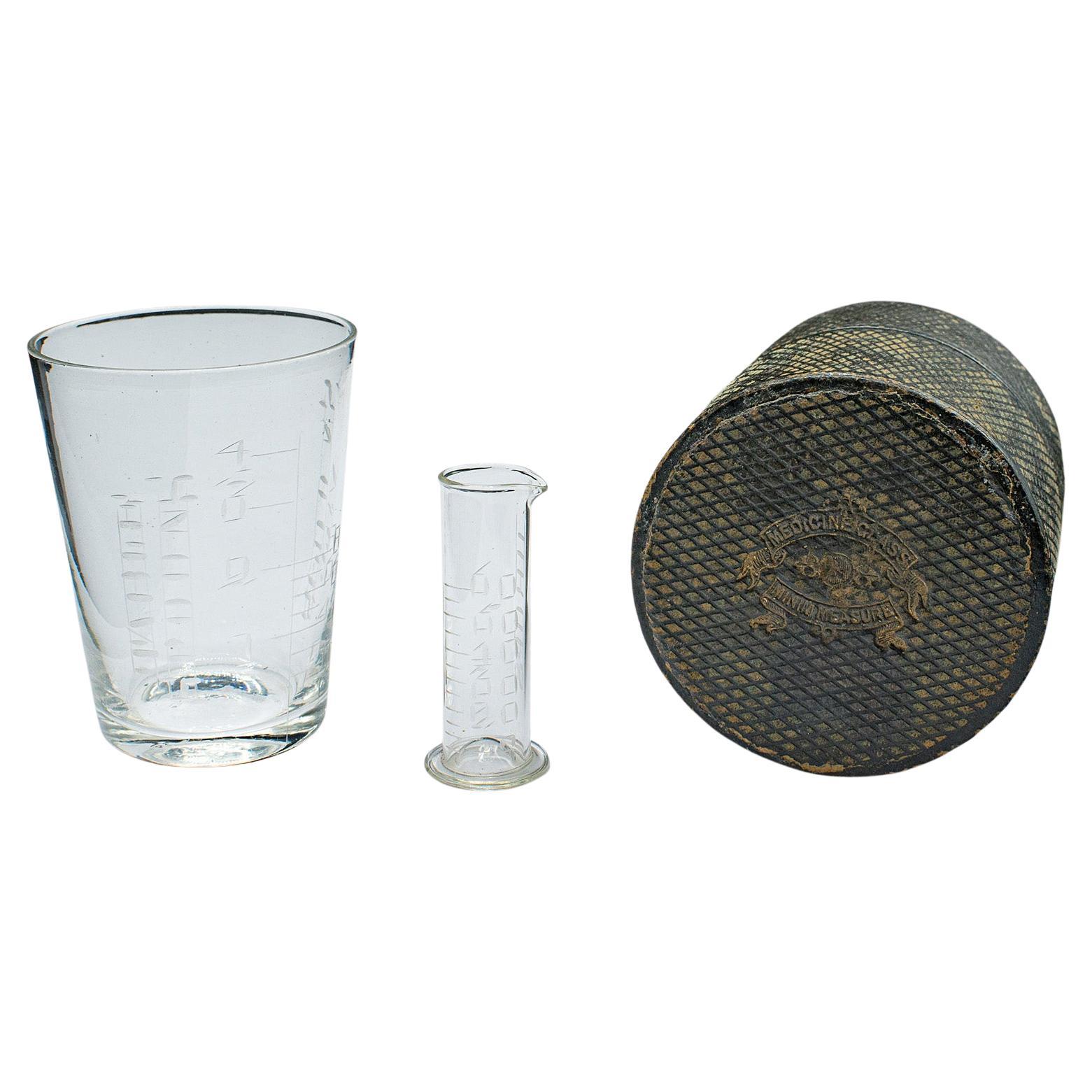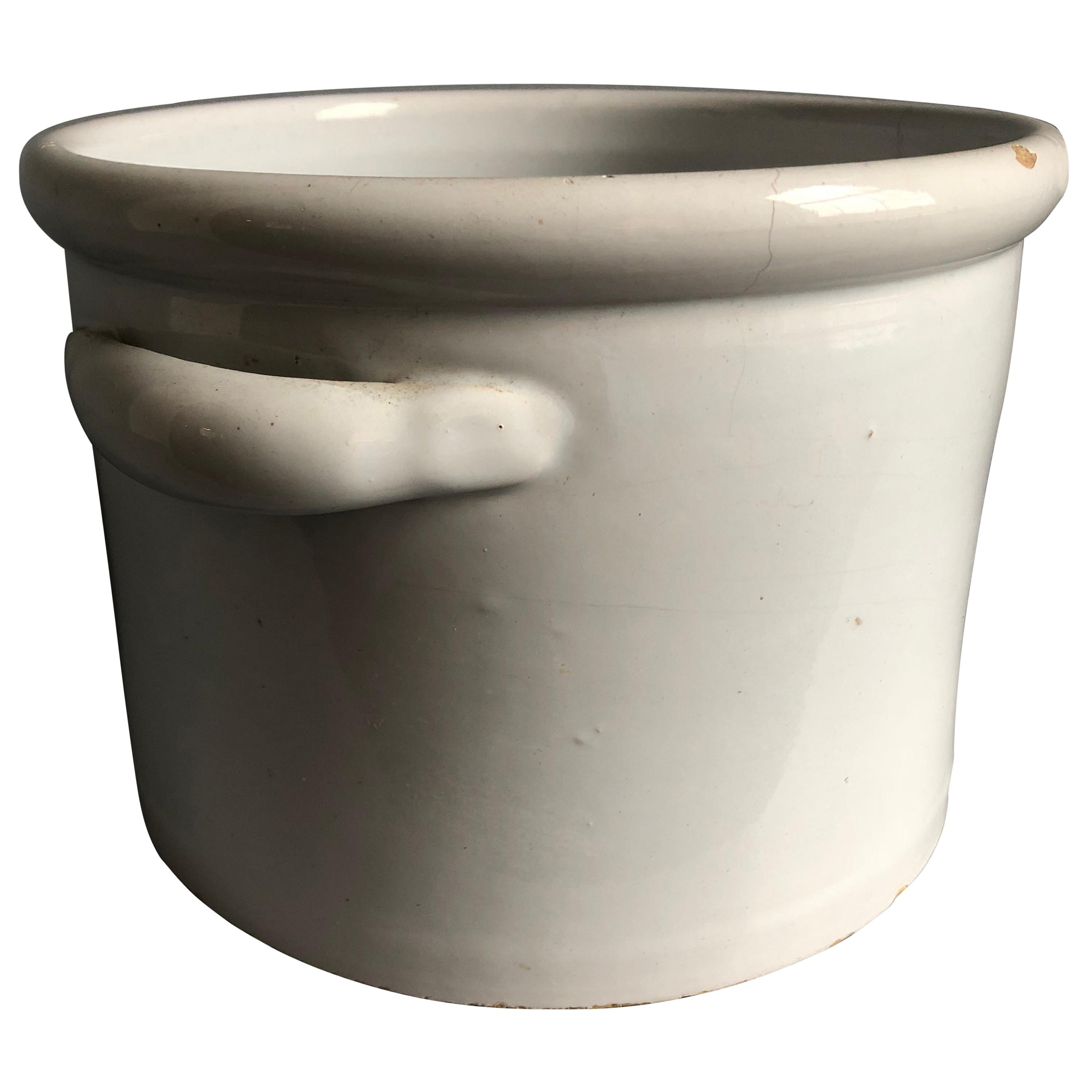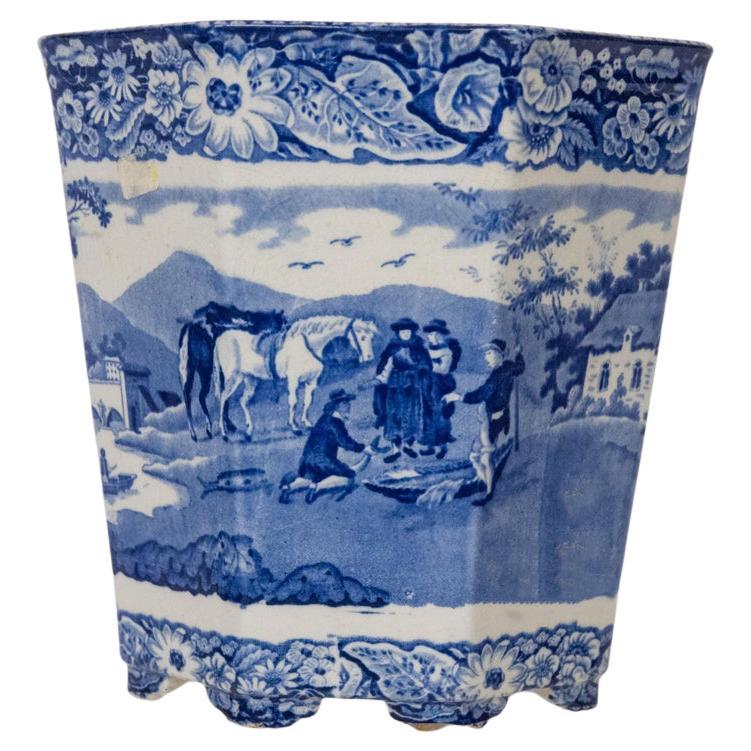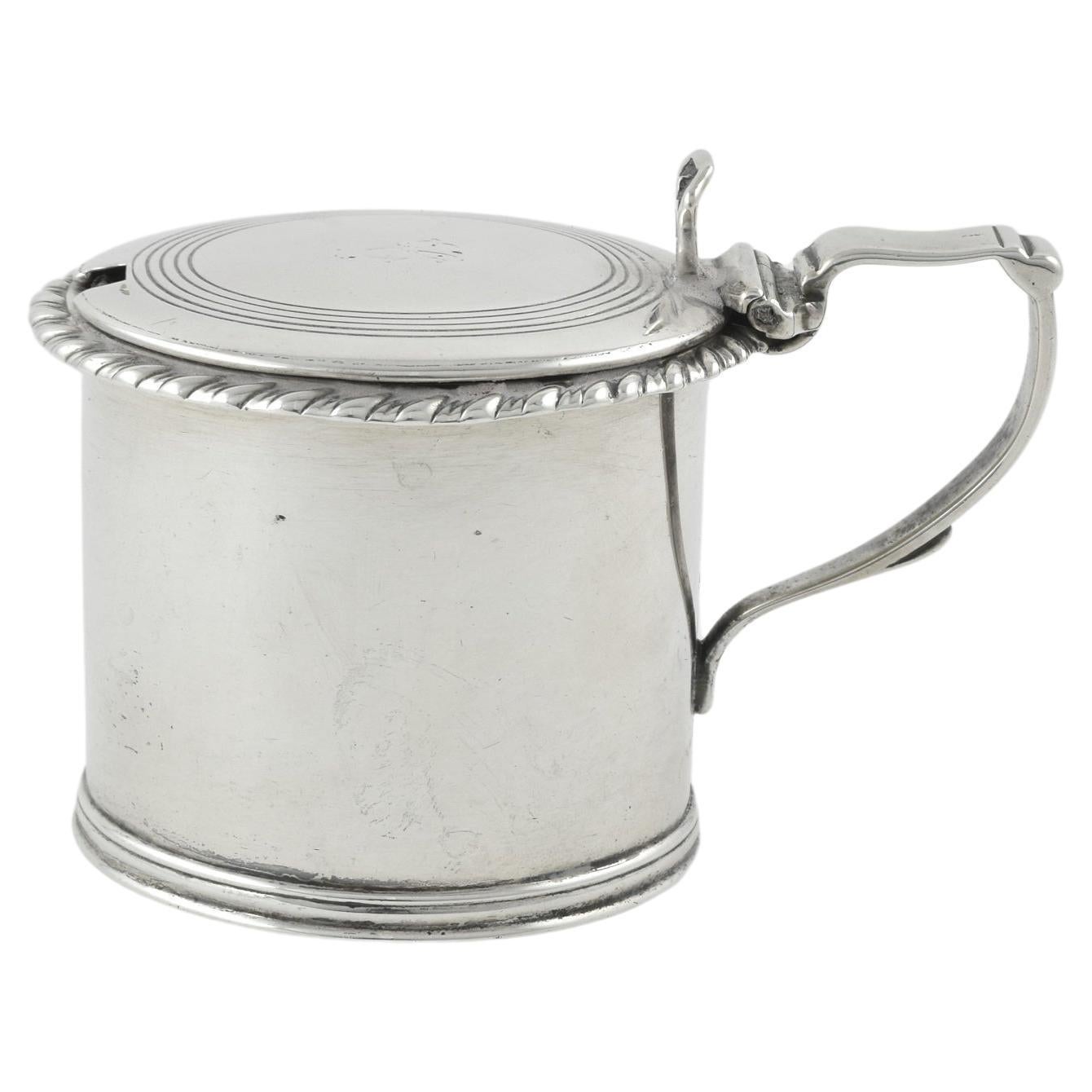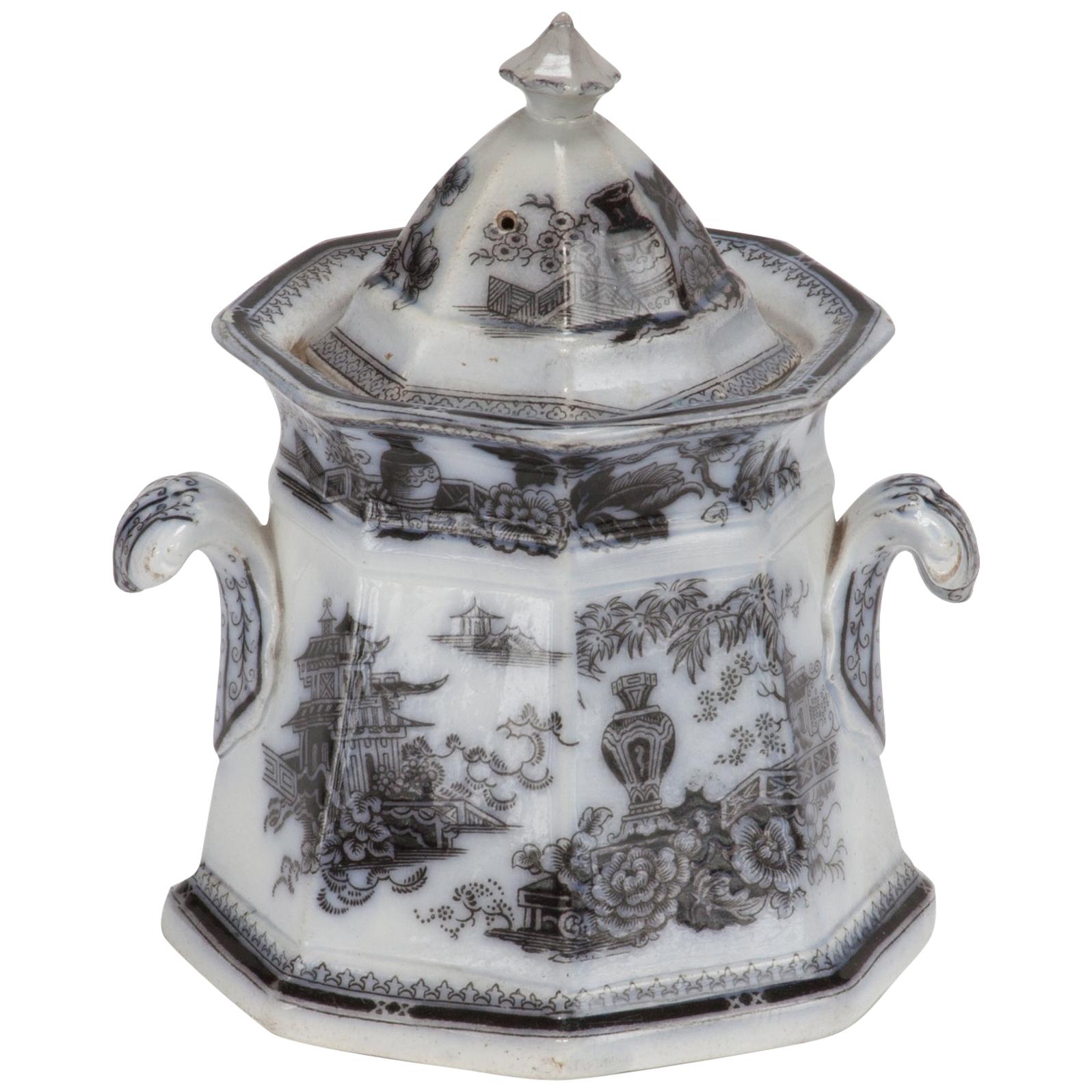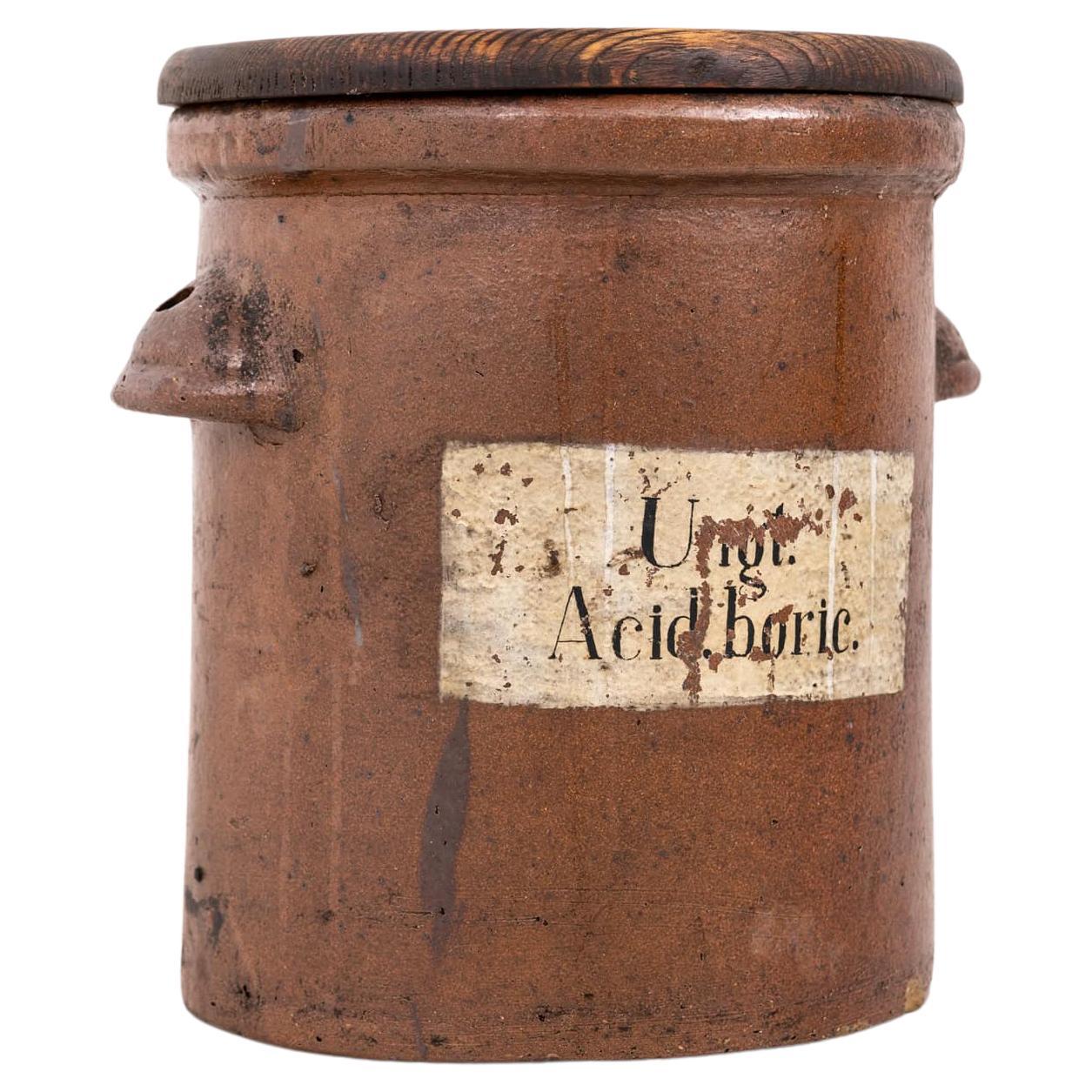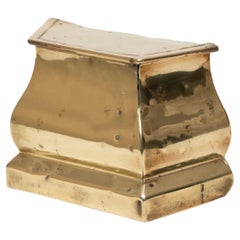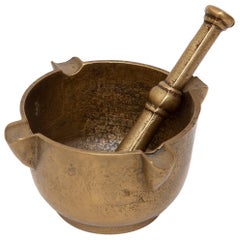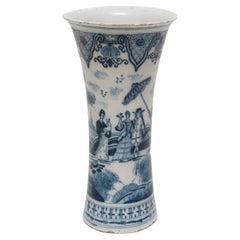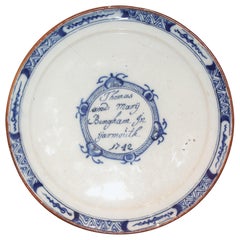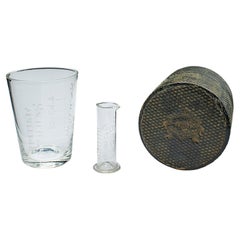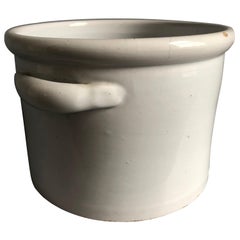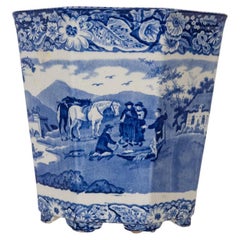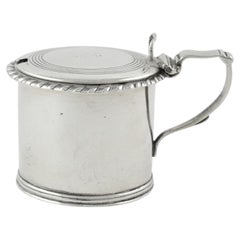Items Similar to Ointment Pot Apothecary Poor Man's Friend Dr Roberts Bridport Beach & Barnicott
Want more images or videos?
Request additional images or videos from the seller
1 of 8
Ointment Pot Apothecary Poor Man's Friend Dr Roberts Bridport Beach & Barnicott
$2,054.55
£1,500
€1,763.08
CA$2,836.59
A$3,144.77
CHF 1,652.70
MX$38,486.89
NOK 20,640.57
SEK 19,373.24
DKK 13,160.29
About the Item
With a flared lip. Inscribed in bold, hollow lettering in blue. On one side ' Poor Man's Friend price 1/1/2 ' The other ' Prepared only by Beach & Barnicott successors to the late Dr Roberts, Bridport '
Some nibbling to the edges and discolouration
Measures: diameter 4.5cm, 1 3/4" height 3.5cm, 1 1/4"
The 'Poor Man's Friend' ointment consists mainly of lard and fine English beeswax, plus calamel, sugar of lead, salts of mercury, oxide of zinc, oxide of bismuth, venetian red, oils of rose, bergamot and lavender. It would have been effective for the treatment of eczema and minor skin infections, mainly due to the zinc oxide.
The earliest pot state an inscription 'Prepared only by Dr. Roberts, Bridport'. Following these pots, Beach & Barnicott appears as successors to the late Dr. Roberts. A black print variation is produced after 1910 with a different print style. Two type of pot exist, one with a recessed rim, and the other the normal flared lip type. There are three prices for the pots. A very large size with a price of 4/6, a mid size pot with a price tag of 2/9 and the common pot with the price of 1/1½.
The pots carry a blue print and slight variations of print type are used, bold lettering, hollow lettering for example.
Dr. Giles Lawrence Roberts 1766-1834
Giles L. Roberts was born on 21st April 1766 at 'The Ship Inn' in West Bay, then known as Bridport Harbour. The Ship Inn was known locally as 'The Sloop', but in 1822 was renamed the 'Bridport Arms'. In his early years, Giles Roberts helped his parents run The Ship Inn. However, as his interest in medicine developed, Roberts set himself up as a chemist, opening a shop at West Street in 1788 and his trade and reputation grew. Although he had obtained a licence to draw blood, extract teeth and cauterise wounds, Roberts was criticised for his lack of formal medical qualifications. Giles Roberts was persuaded to enroll as a student at Guy's and St Thomas hospitals in London, where he obtained certificates to practice as a surgeon, physician and apothecary. Two years later in 1797, at 31 years of age, he was awarded an Honorary Medical Diploma (MD) from the Royal College and University of Aberdeen. In 1805, Doctor Giles Roberts opened his shop at 9 East Street, formally the Old George Inn where Charles II was almost captured by troops in 1651. Here he was able to set up a laboratory and give lectures. On a panel of the stone seat in Bucky Doo Square, there is reference to a pharmacist shop at 9 East Street. Roberts married Phoebe Brown from Shipton. They had one child, but died in infancy. In 1807, Dr Roberts was appointed Medical Attendant to the poor in Bridport, taking the opportunity to campaign for better hygiene and during a cholera epidemic, distributed at his own expense, a pamphlet on healthy living. He was known not to charge for giving medical advice. Dr Roberts was also a devout Methodist, actively preaching the gospel and opening chapels. He died in 1834 and was buried in St Mary's churchyard in Bridport, where a large obelisk marks his grave inscribed 'His Memory is Cherished Especially by the Poor with Grateful Feelings'. The pharmacy continued to manufacture his ointment under the names of Thomas Beach and John Barnicott until 1903, then under Edgar Beach until 1946. Dr Roberts Close, off South Street, was named in remembrance of his work. In the 1970's, a pharmacist bought Dr Roberts' old shop and discovered the original copy of the recipe for the 'Poor Man's Friend' in a sealed envelope marked 'Private'. It was bought by the Bridport Museum in August 2003 for £480. Other key pieces of Dr Roberts paraphernalia purchased by the museum included the dispensing cabinet at £2,185 that used to be in the East Street shop, his Medical Diploma and gas lights, which in 1832 had been the first in Bridport.
There is a Museum located in Bridport, Dorset that displays artefacts relating to
Dr Roberts. The original premises that sold the Poor Man's Friend Ointment is now a cafe.
- Dimensions:Height: 1.38 in (3.5 cm)Diameter: 1.78 in (4.5 cm)
- Style:Victorian (Of the Period)
- Materials and Techniques:
- Place of Origin:
- Period:
- Date of Manufacture:circa 1850
- Condition:Wear consistent with age and use.
- Seller Location:BUNGAY, GB
- Reference Number:1stDibs: LU3867332300782
About the Seller
5.0
Vetted Professional Seller
Every seller passes strict standards for authenticity and reliability
Established in 1985
1stDibs seller since 2018
99 sales on 1stDibs
Typical response time: 9 hours
- ShippingRetrieving quote...Shipping from: BUNGAY, United Kingdom
- Return Policy
Authenticity Guarantee
In the unlikely event there’s an issue with an item’s authenticity, contact us within 1 year for a full refund. DetailsMoney-Back Guarantee
If your item is not as described, is damaged in transit, or does not arrive, contact us within 7 days for a full refund. Details24-Hour Cancellation
You have a 24-hour grace period in which to reconsider your purchase, with no questions asked.Vetted Professional Sellers
Our world-class sellers must adhere to strict standards for service and quality, maintaining the integrity of our listings.Price-Match Guarantee
If you find that a seller listed the same item for a lower price elsewhere, we’ll match it.Trusted Global Delivery
Our best-in-class carrier network provides specialized shipping options worldwide, including custom delivery.More From This Seller
View AllBox Cannister Caddy Brass Tobacco Tea Dutch
Located in BUNGAY, SUFFOLK
A charming early tobacco box or tea cannister
Unusual, large size
Lovely soft contours which enhances the reflection of light in the interior
Original condition including hinges
length 21cm., 8 1/4" depth 7.5cm., 3" height 11cm., 4 1/2".
The Dutch were the main importers of tobacco in the 18th century and manufactured tobacco boxes to sell with...
Category
Antique 18th Century Dutch Baroque Snuff Boxes and Tobacco Boxes
Materials
Brass
Brass Mortar and Pestle Minature
Located in BUNGAY, SUFFOLK
Measures: Mortar height 5.5cm
Mortar width 10.2cm
Mortar depth 10.2cm
Pestle: 10 x 2.5cm
just purchased more information to follow or on request.
Category
Antique 1890s English Baroque Revival Models and Miniatures
Materials
Brass
Vase Delftware Dutch Blue and White
Located in BUNGAY, SUFFOLK
Unusual decoration blending a European pastoral landscape with Chinoiserie ornamentation. Suitable for everyday use.
The tapering body decorated with a European lady and a gentlem...
Category
Antique 18th Century Dutch Chinoiserie Delft and Faience
Materials
Earthenware
Plate, Delftware, 1742, Dutch, Thomas and Mary Bingham, Yarmouth, 1742, Suffolk
Located in BUNGAY, SUFFOLK
The inside centre decorated with the inscription, “Thomas and Mary Bingham In Yarmouth 1742”, inside a medallion. The rim decorated with six artemisia leaf reserves, with trellis borders interposed. The rim brown. Restoration to a rim glaze chip. Decorated in blue on a white glaze. Probably Dutch, second quarter of the 18th century.
Provenance: Thomas Bingham was christened in Great Yarmouth, Norfolk, on November 14, 1697. Thomas Bingham married Mary Dent at Woodbridge in Suffolk on 24th August, 1721. Thomas and Mary Bingham had a daughter Ann christened in Yarmouth on December 17, 1727. Thomas Bingham was buried in Great Yarmouth on July 6, 1774. Thomas, a son of Thomas and Mary Bingham, was christened in St. John Maddermarket, Norwich, on December 3, 1775.
In the Universal British Directory of 1793-8, Woodbridge is described as a maritime town situated near the River Deben on the turnpike road leading from London to Yarmouth. It is about 77 miles from London and as Great Yarmouth is 123 miles from London, the distance by road between the two places is about 50 miles. The River Deben, on which the town is situated, is stated to have been navigable up to the town where there were two quays. There is no-one named Bingham listed in Woodbridge in the entry for the town in the Universal British Directory.
In the printed Freemen of Yarmouth, a John Bingham is the only entry under the surname. He became a freeman in 1721, having been an apprentice of John Cooper. There is no mention of the surname in the three volume Perlustration of Great Yarmouth by C J Palmer...
Category
Antique Mid-18th Century Dutch Baroque Delft and Faience
Materials
Earthenware
Watering Can Hot Water Jug Brass Minature House Plants 4 Pints
Located in BUNGAY, SUFFOLK
Perfect size for house plants, seeds or carrying hot water.
Beautiful collectors item or decorative object.
A fine Victorian oval, brass watering can or hot water jug. Upper bras...
Category
Antique 19th Century English Victorian Garden Ornaments
Materials
Brass
Plate Delftware, Inscribed 1744, Dutch, Great Yarmouth, Blue and White, Herring
Located in BUNGAY, SUFFOLK
The inside centre decorated with the inscription, “Great Yarmouth 1744”, surrounding the blazon of the arms of the town (three lions passant guardant in...
Category
Antique Mid-18th Century Dutch Baroque Delft and Faience
Materials
Earthenware
You May Also Like
Antique Pharmacist's Medicine Cup, English, Glass, Apothecary Measure, Victorian
Located in Hele, Devon, GB
This is an antique pharmacist's medicine cup. An English, glass and leather apothecary measure, dating to the Victorian period, circa 19000.
A fa...
Category
Antique Late 19th Century British Scientific Instruments
Materials
Glass
French Faience Cache Pot, 19th Century
Located in Doylestown, PA
A white glazed French Faience “Cache Pot” with handles, circa 1870.
Category
Antique 19th Century French French Provincial Delft and Faience
Materials
Faience
Antique English Flower Ceramic Cachepot
By Thomas Pratt
Located in Alessandria, Piemonte
O/7937 - Elegant ceramic vase with octagonal shape, patter name " Pratts Native Scenery" .
This British ceramic is difficult to find now, the maker was Pratt at the end of 19th cen...
Category
Antique Late 19th Century English Other Ceramics
Materials
Ceramic
A victorian mustard pot
By John Edwards
Located in London, GB
This charming little mustard pot was made by John Edwards in 1863. The brim is decorated with gadrooning. Inside the mustard box is a glass insert.
Category
Antique 19th Century Serving Pieces
Materials
Sterling Silver
Small Transfer Ware Pot with Lid
Located in Los Angeles, CA
This exquisite early 19th-century chinoiserie box, adorned with lacquered surfaces and ornate gold-toned detailing, showcases the superb craftsmanship of English artisans influenced ...
Category
Antique 19th Century English Victorian Ceramics
Materials
Ceramic
Antique Salt Glazed Clay Apothocary Chemist Hand Painted Jar Tub Pot. c.1900
Located in London, GB
An original salt glazed clay apothecary jar. c.1900
Once containing boric acid and likely used is a pharmacy. Perfect for repurposing as a plant pot or log bin. Remnants of the hand...
Category
Mid-20th Century English Edwardian Antiquities
Materials
Wood
More Ways To Browse
Large Blue Pottery
Victorian 1970s
Silver Salts
Museum Glass Display Cabinet
Victorian Shop Display
St Charles Cabinet
Sugar Cabinet
Robert John Cabinet
Graver Antiques
Antique Medical Cabinets
Apothecary Pottery
Antique Furniture Aberdeen
Doctors Cabinet
Victorian Medicine
Antique Doctors Cabinet
Zinc Pots
Antique Chemist Cabinet
Antique Open Salts
